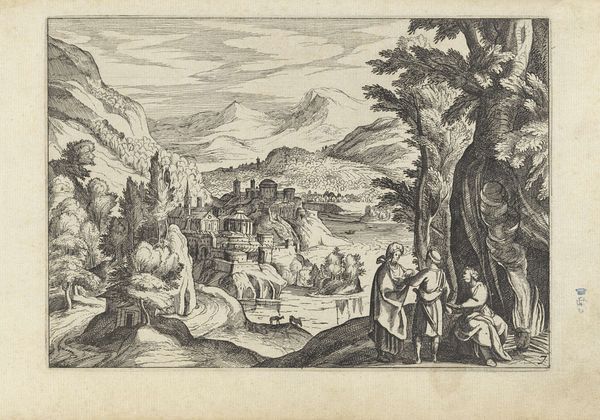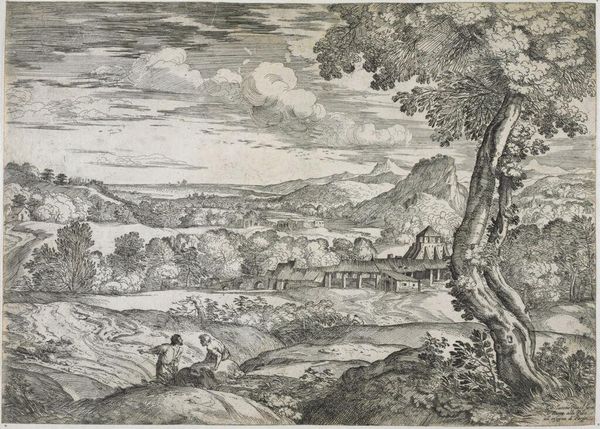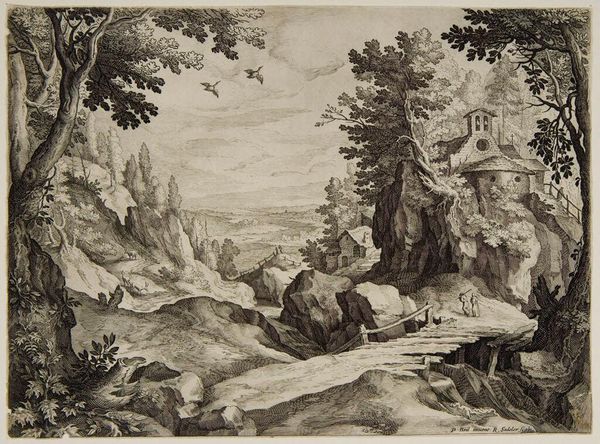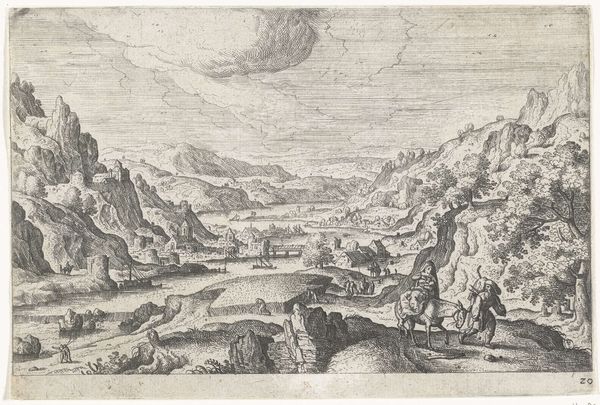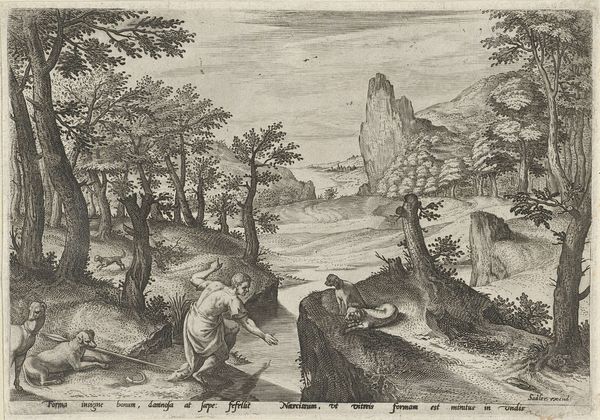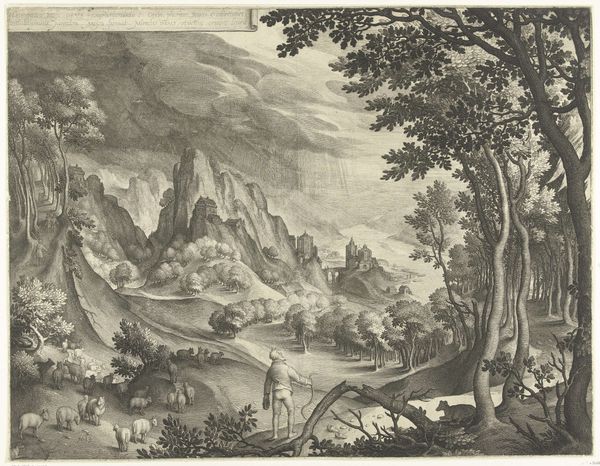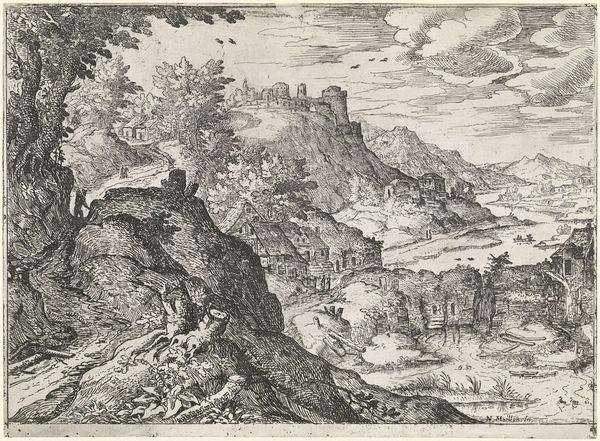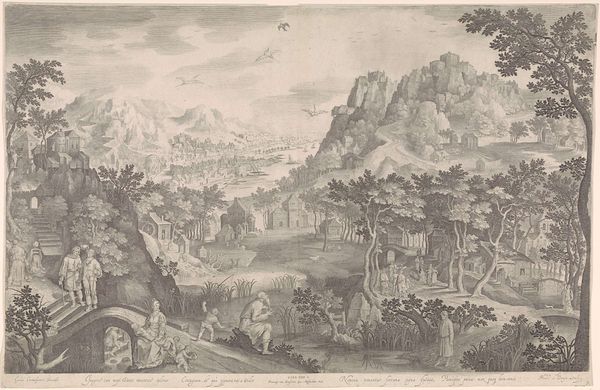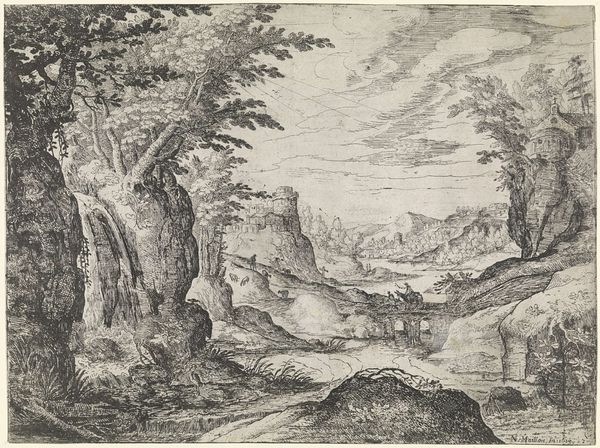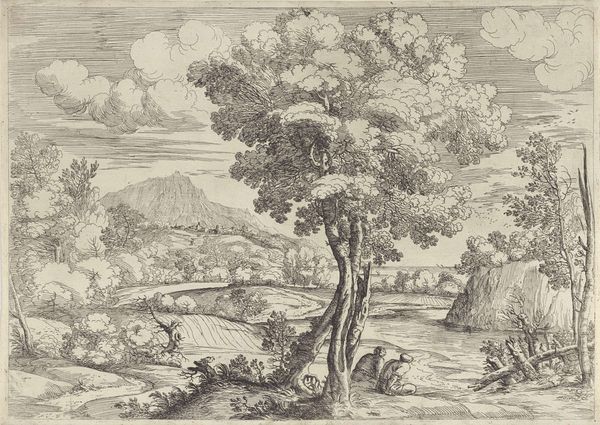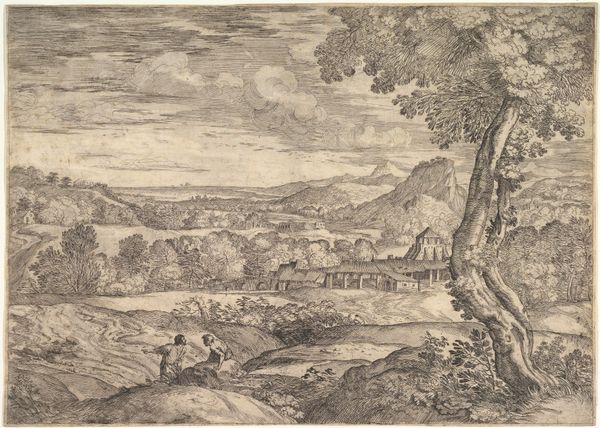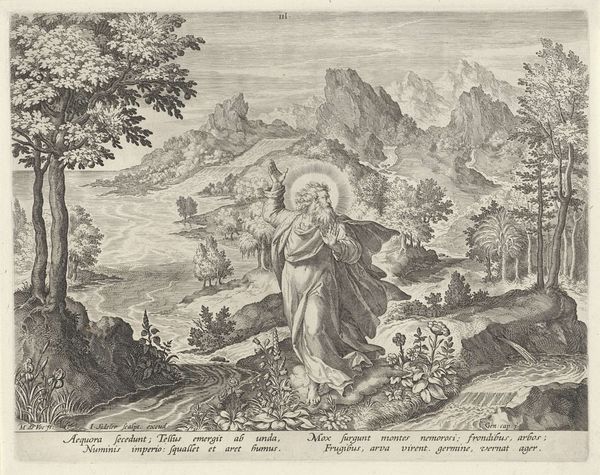
painting, oil-paint
#
sky
#
painting
#
oil-paint
#
landscape
#
oil painting
#
rock
#
mountain
#
history-painting
#
northern-renaissance
#
realism
Dimensions: 17 x 21 cm
Copyright: Public domain
Editor: So, here we have Joachim Patinir’s “Landscape with the Flight into Egypt,” painted in 1515. It’s an oil painting with this really interesting composition. I’m struck by the almost dreamlike quality of the landscape and how tiny the figures are in comparison. What do you see in this piece? Curator: The painting’s power lies in its subtle encoding of narrative. Consider the landscape itself – it is not just scenery. Mountains, for example, often signify obstacles and spiritual aspirations in art of this period. And what about the small figures on the road; what do they mean to you? Editor: I think it’s Mary and Joseph fleeing with the baby Jesus, as the title suggests. The journey feels really perilous based on how they are painted as figures, but you said something about "encoding of narrative" through this work. Can you expand more? Curator: Precisely. Now, notice how Patinir strategically places them. They become pilgrims in a broader human drama set against the immensity of the world. He blends both the sacred and secular realities that define the cultural psyche of the time. Look how Patinir uses size to signify human experience within a cosmic scale. What emotions are evoked with such perspective? Editor: That makes me consider the sheer scale differently. It’s both terrifying and comforting. To me, it’s almost like the figures don't matter, or everyone does at the same time. The symbolism really heightens the painting's depth. I originally missed the narrative component, as my eye was initially drawn to the landscapes, but I am beginning to understand how I, the viewer, fit within this perspective, too. Curator: Absolutely. By understanding this piece's iconography, we uncover not only a story but the lasting echoes of humanity's cultural journey.
Comments
No comments
Be the first to comment and join the conversation on the ultimate creative platform.
